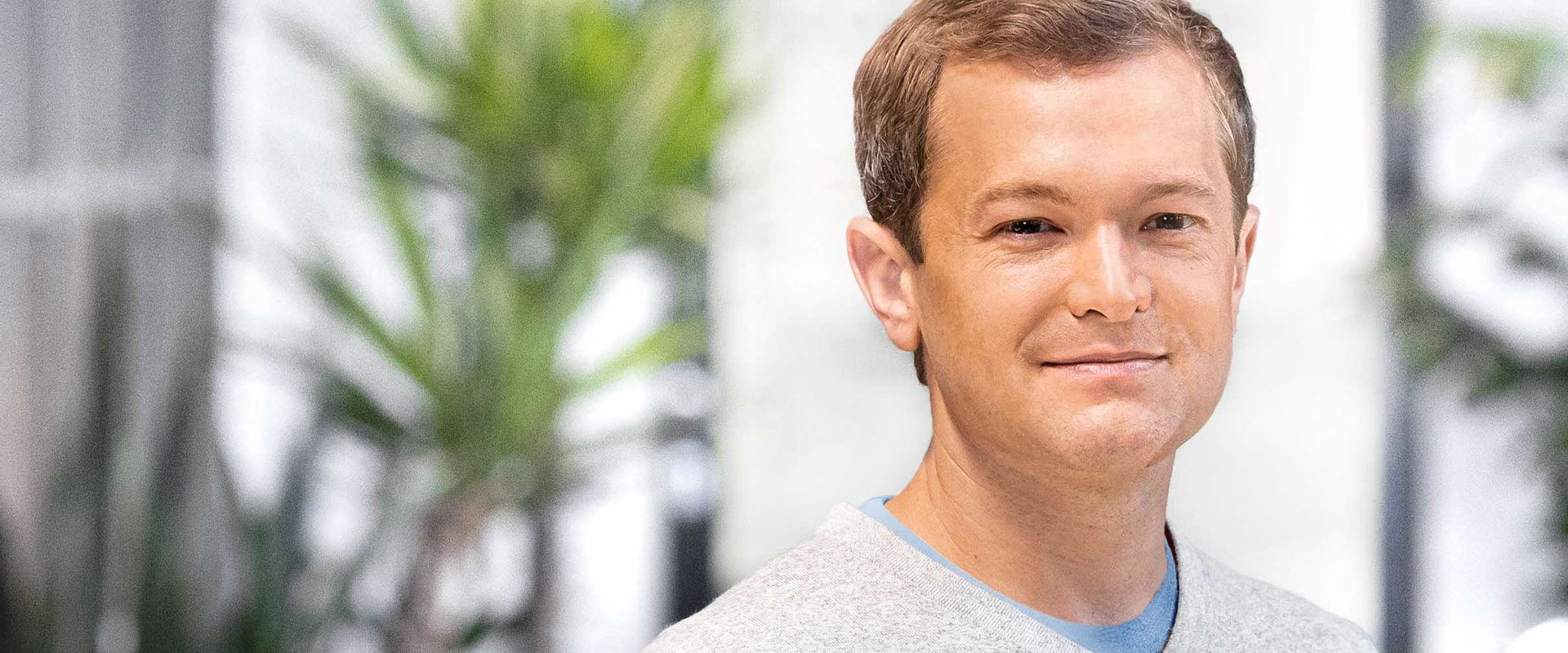
Marketers
are essentially
investors
Join us this week as we get Up-Close with Emil Martinsek, Chief Marketing Officer at GetYourGuide. Having spent nearly 10 years with GetYourGuide, Emil’s has seen firsthand the trials and tribulations of the travel sector over the last decade. Dive in to read about how Covid had made him more adaptive and how he strikes the right balance between acquisition and brand building marketing.
What is your career highlight to date? How has this influenced you as a leader?
There certainly have been special moments in my career where I’ve gone through big periods of learning, revelation, success, etc., yet I view my career as a series of events that I have learned from (whether they were positive or negative) as opposed to one event in particular. A long time ago someone asked me: “Do you regret anything in your life as a manager or leader?”. Certainly in the moment there have been things that I regretted, but everything one does makes them the person and the leader that they are, so from my perspective, it is about the series of events that you encounter; how you learn from them, embrace them and build your perspective on the world as a result.
COVID, for example, was completely devastating for the travel sector and it forced me to take some hard decisions, such as the extent to which we continued - or stopped altogether - certain marketing investments
One decision that we made at the time (which I personally disagreed with) was to halt almost all of our content activity as there was very little traffic - no one was thinking about travel at the time so it was deemed an unnecessary cost. The reality, however, is that today content is king and this trend was already emerging in 2020. Had I thought about it differently back then, I would have found different and creative ways to shape my spend, my team and my resources to keep focussing on that vital activity, but with hindsight you end up learning from experiences like that.
When you come out the other side and realise your errors, it makes you rethink your decision-making process. As you encounter challenges in the future, it becomes about looking beyond the short-term horizon and focusing instead on what might happen in the proceeding twelve to twenty-four months.

How do you think the role of a marketing leader has changed during your career
On the one side, I have witnessed an increasing trend over the last 10 years of marketers working more closely with technologists. I would go as far to say that we have moved to a point in time where the core capabilities of marketing are those of technologists, who understand how to build content and creative platforms that scale massively. And on the other side, marketers are essentially investors. In earlier years, you used to say ‘I am going to run a campaign. I need approximately this much money to reach this many people and it will create this much awareness.’ Then you would spend the money, do some modelling and say ‘great, it worked the way we wanted it to’. Now, as marketing has become digitised and as data has become easier to control, measure and collect, we have moved into this world where there starts to become a stark differentiation between organisations that know where their marketing dollars go in terms of the customers they are reaching, the types of products they are selling, and the types of markets they are moving into versus those businesses who think they know, but actually do not. As the cost of capital goes up, marketers need to be able to get better at allocating the next euro, the next dollar, the next pound to where it is going to bring the best return for the business.
What really cool trends have you see in your function in the last 12 months (new channels/ways of shopping; tools; measurements, etc)?
There are two big macrotrends that have been surfacing for a while. One is the rise of the creator world around us. The creator economy concept is not new per se, nor do I think it is truly a wholesale change in how marketers need to react, but I believe it opens up new opportunities to build and express your brand in creative ways. Equally it also puts pressure on how you communicate your brand because you are no longer the sole owner of your brand message nor the only brand extension. This can be scary, but I think you can either choose to be afraid of it, or you can choose to lean into it - I personally choose to lean in.
The second trend has been coming for a while and that is the ability to unleash generative AI not only for marketing creation, but also deep machine learning and AI that feeds into algorithms that help target customers, assess customer spend, deliver creative content messaging to customers, etc. It is a totally different landscape than what it was five years ago and I believe this will revolutionise marketing and start to differentiate the best marketers over the next few years.
The War-Time CMO – How has the current economic and market context impacted your strategy?
Ironically, looking back I believe that Covid was beneficial in the longer term for our sector as it has taken the edge off the current market - it feels less high pressure than other sectors, such as Fintech. Fintech companies were flying high in 2020, so today it feels hard - capital has evaporated and you need to think about every dollar allocation (the way we had to ourselves in the peak of the pandemic).
During Covid, we had to rationalise how much we wanted to risk and where we wanted to invest as a company. As a result, we can now better determine what is a short-term investment, what is a medium-term investment, and what is a long-term investment. From a marketing perspective, brand building is a very long-term investment, whereas acquisition is a short-term investment. We can more maturely choose what risks we want to take and where we want to place our bets. We have seen an enormous amount of market performance volatility, so we now know how to balance, make the hard decisions and understand the corresponding consequences and trade-offs - we have built that muscle. I think the key word that we learned during the pandemic is adaptation. The companies that will survive this period are the ones that can build an adaptive muscle that learns to move investments efficiently across short and long-term horizons. This has not really impacted our strategy, but rather changed our list of priorities. We now consider what we can take on today versus what we need to look at in six months.
“During Covid, we had to rationalise how much we wanted to risk and where we wanted to invest.”
What would be your advice for CMOs leading through economic challenges for the first time?
In nimbler companies one may be more hands-on and operational, but as a company scales and becomes larger, the role evolves to becoming more of a generalist. In this generalist role, you need to be good at making sure that the team is clear on its objectives such as where you want to play within the market and what the constraints are on your business. Once you make sure that is all well aligned, you need to focus on how it translates into what you prioritise, and then make decisions swiftly whilst not worrying if you were exactly right or a little bit off because you can always course correct. The worst thing that can happen is lack of alignment at the senior executive level - one can make decisions that you think are right when they are actually off because the CEO is thinking something different to the CFO who is also thinking something different to the CTO. Once the synergies are there, however, it is easy. We had no revenue, yet this clarity made it easier to prioritise and adapt. So, my lesson would be: focus on clarity and alignment of priorities and then crystal clear decision-making.
“I would like to make a differentiation however, between brand advertising and brand purpose. Establishing a stake in the ground about what your brand stands for is something that is vital for all companies, no matter how large or small.”
At what stage do you believe a business needs to switch from acquisition-focused activity to heavier investment in brand?
The way I think about it is ‘how do you build liquidity as a business, whatever that liquidity may be?’. Take the example of a food delivery company: brand investment decisions are a little bit easier because your market is tighter – all your supply and customers are in the same city, so liquidity is not too complex to build. In this case, you have to ensure you have enough drivers to deliver, enough restaurants signed up to have a good offering and enough customers to keep both of the other sides of the platform engaged so that there is value. Your brand spend is localised and highly valuable to that contained market. Compare that to a travel company: brand investment decisions are more complex as travel ultimately takes a longer time to materialise (you are not deciding on dinner tonight but planning a trip 3 months from now) and market liquidity is often global. For example, commonly Germans travel to the UK, Italians travel to the U. S. and to Thailand, and Americans travel Mexico and Japan, so getting this lined up means it is typically much more expensive to run a brand campaign in the travel sector. You therefore focus on customer acquisition first and foremost, investing until you reach a point where your liquidity is stable and scaling, at which point you compliment this with brand building as you now have a better investment platform for that brand. I personally believe you can adopt an academic approach to this question.
Whilst many marketers may not think in this way, as a data science analyst by training, I think that marketplace liquidity and realistic marketing ROI dictate when you move between one marketing activity and the other. I therefore approach the acquisition versus brand debate from as much of a mathematical angle as a statement of purpose and strategic decision as a company. You can certainly build liquidity with more upper funnel, above the line marketing activity, yet if to achieve liquidity those returns are unfavourable, focus instead on where you can get returns and secure liquidity first. Once you attain that stability then add brand building on top and that will sustain you from a longer-term investment and business perspective.
I would like to make a differentiation, however, between brand advertising and brand purpose. Establishing a stake in the ground about what your brand stands for is something that is vital for all companies, no matter how large or small. This purpose may evolve over time as you learn and as you find your perfect product market fit, but it is something you should always do because it makes everything else easier. Having a clear brand purpose is an edge that you can use to enter new markets and I think it is maybe one thing that companies often miss. If companies do not know what they are really differentiating on, who they are really targeting, why their brand matters etc., I think that can lead to poor returns.
How do you strike the right balance between acquisition activity and brand building on an ongoing basis?
For me it comes down to an analytic mixed media model. When we built up our business (like most travel scale-ups), we relied heavily on Google. At a certain point, however, the marginal return on both organic and paid activity starts to deteriorate; we were acquiring customers and doing elasticity tests on spend and seeing that for every additional euro spent in Germany instead of getting €1.20 back now, we were eventually achieving €0.80, and then that was worsening to €0.60. When this happens you realise you have reached the available audience that is either aware of you, who might be looking for something in your industry, and/or who might be thinking about using your service. At that point, one of the best ways to open up the funnel is to actually inject brand marketing, or upper funnel marketing, on top of your acquisition channels - as people become more aware of your brand they are more likely to click on your ads; are more likely to engage with your content; are more likely to come and download your app, etc. This will then change the marginal efficiency of every extra euro that you spend.
As such, a lot of what we think about in markets where we operate is what is the right media mix depending on what we are seeing in terms of our marginal returns on marketing spend. In some markets we do not need to invest in top of funnel as yet. As top of the funnel investment is longer term, riskier and slower to show a return, that is not a bad thing. In that case, we will stay more focused on lower funnel activity in that market until we see marginal returns decrease, at which point you turn upper funnel activity back on.
“As top of the funnel investment is longer term, riskier and slower to show a return, that is not a bad thing.”
This is how I think about it: this question of balance is dictated by the dynamic reallocation of spend that in turn depends on realistic return on investment at any point in time. In my opinion, and all the more in this market where it is becoming increasingly important to have a close watch on capital allocation, it is about maintaining optimal ROI balance, and this is a purely mathematical versus emotional decision.
Do you believe both can be measured in similar ways?
Generally they can be measured in the same way as you can do attribution or awareness spend analysis on upper funnel activity in the same way you can do attribution on bottom of funnel spend. What is more important however, for me is to constantly think about incrementality, and measure specifically for it. On a certain spend, for example, you may not see a big direct response, but the reality is when you look at it with a combination of channels, it is lifting the whole boat. I therefore encourage my teams to think about it incrementality across all channels, even in the lower funnel channels. From my experience, the process of measuring incrementality holds true on any channel that you operate in. There are very few channels that are impossible to measure therefore everything we do involves tweaking models, measuring and testing. The differences come about when you operate inside these channels and when what you optimise against changes. My paid search team, for example, focuses on driving revenue and ROAS. My display team thinks more about visits, or what we call quoters, or a qualified visitor. Then in upper funnel channels we think about +metrics such as CPC or CPV across each media type with an overlay of routine awareness measurement. Overall, you need to use your incrementality modelling to tie it all together in one picture to assess your return on investment, and you need to think about how all the channels interplay to see whether they are working or not.
How do you keep up to date on the latest marketing practices, tools, tech, channels? And any suggestions of great books / podcasts / content?
When it comes to external sources, I have two go-to blogs that I read regularly:
- Ben Evans who used to work at Andreessen Horowitz and then Mosaic. He has a good newsletter and blog out there.
- Digital Native, a blog which I think is run by Rex Woodbury from Index.
The reason I read these is because they talk about trends in technology and business that are outside of what I encounter day to day within my business or within my direct network. They push me to think about how I might want to experiment in my own organisation. For example, after some time reading Digital Native, I decided to build up an influencer creator community natively within our company. We built up a community growth group with just four people, and in two years we onboarded 2,500 travel creators. They are creating so much value for our business, and it is all managed internally - when other companies approach us with their influencer networks of 500 or 600 people, we say ‘No thank you; we have 2,500!’. This capability we built up to leverage the democratisation of content is so powerful not only from a marketing point of view, but also from a learning perspective.
Other than those blogs, I like to talk to mentors who have interesting backgrounds and experiences. Instead of reading books about leadership, I prefer to talk to real people who share the nitty-gritty details with you (the good, the bad, and everything in between). As a leader myself, it is the bumps and wiggles in between the big moments that matter most. My advice is to build a group of mentors or peers who are either great leaders themselves or experts in their fields. This, in my opinion, is the best way to learn.

